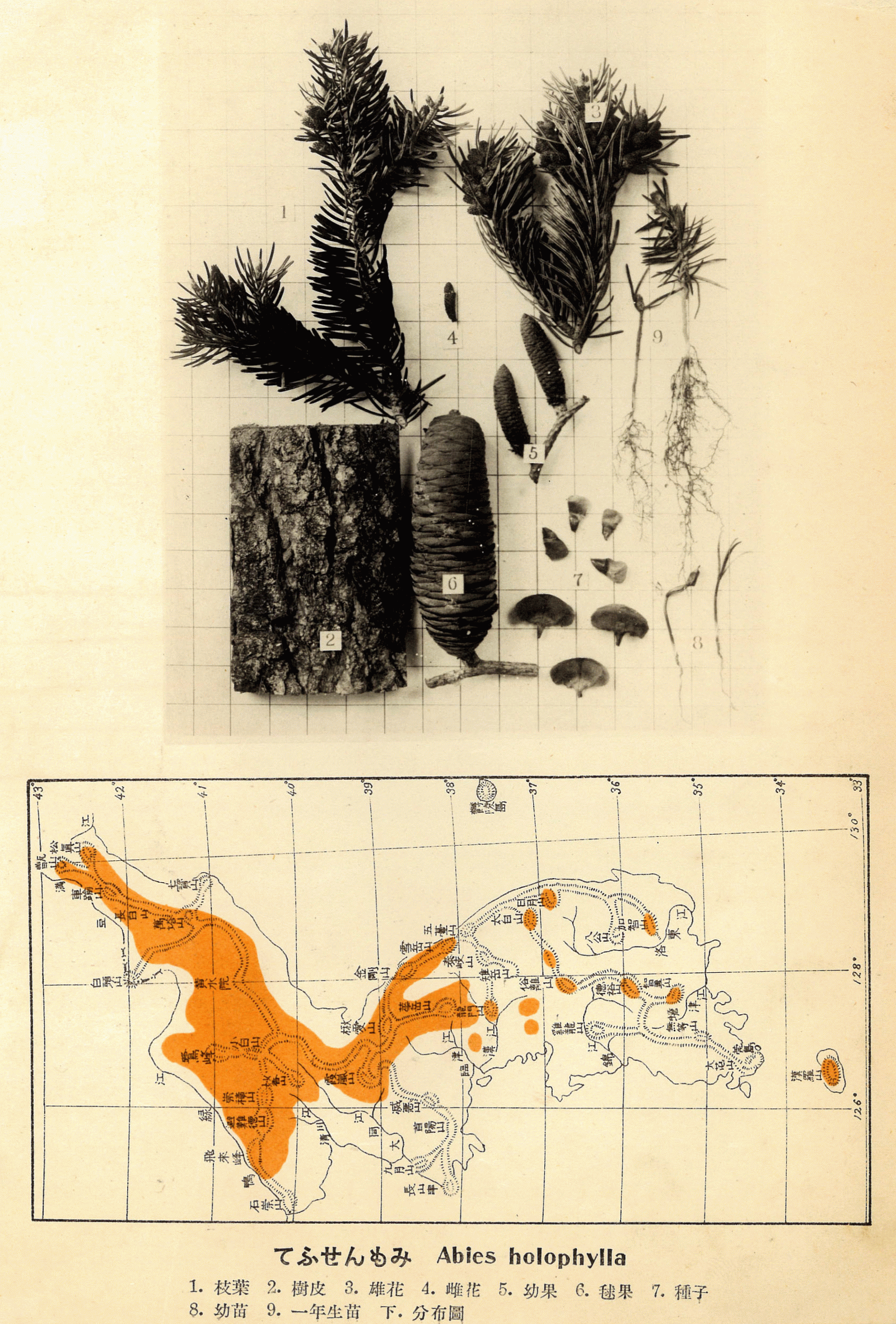Forschung
Invented Woods and Forests: The Tree Collections, Displays, and Networks of the First Korean Arboretum, 1922-1948
Jung-Hwa Kim

A sample of Abies holophylla (1. branches and leaves, 2. the bark, 3. male flowers, 4. a female flower, 5. young fruits, 6. a cone, 7. seeds, 8. seedlings, 9. one-year-old seedlings) and map of its distribution in the Korean Peninsula (Source: Report of the Forest Experiment Station vol. 4, published by the Forest Experiment Station of the Japanese Government-General of Korea in 1926).
By the late-19th century, the Korean Peninsula – a place where most mountains were considered common ground for anyone to use and no active reforestation policy had been implemented – was experiencing severe forest degradation. Starting in the late-18th century, rapid population growth was accompanied by the rising demand for farmland and fuel; as a consequence, land reclamation and logging in the mountains multiplied. Mountains, which comprise 70% of the Korean peninsula, were gradually transformed into bare hills – a trend that was particularly dominant in what was to become South Korea. The first Korean arboretum, placed in a problem of nationwide bare hills, was established in 1922 as the Central Forest Experiment Station by the Japanese Government-General of Korea. It played a role in identifying suitable tree species for re-shaping the forest landscape of the Korean Peninsula based on tree collection and testing. In the frame of this institution, multiple models of woods and forests were developed, whose designs reflected tensions across political, aesthetic, and scientific domains. Throughout the turbulent times of the Japanese colonial era (1910–1945) and of the United States military government (1945–1948), the arboretum mirrored the different interests of three groups: the Japanese officials, who intended to improve Korean forests to develop and exploit the colony and prepare for a series of wars; the Korean researchers of the so-called “colonial peripheries”, who identified native plant species with the aim of becoming scientists; and the US military officers, who planned a 10-year tree planting programme to compete with the larger forest reserves in North Korea. By reviewing the changes in the collections and designs of trees occurred in the first half of the 20th century, this project aims to reveal the aesthetic, scientific, and political theories underpinning the first period of activity of the Korean arboretum, while disclosing the discourses around wood and forests that developed in parallel with its scientific activity.
This project is part of the Research and Fellowship Program 4A Laboratory: Art Histories, Archaeologies, Anthropologies, Aesthetics, a cooperation between the Kunsthistorisches Institut in Florenz and the Stiftung Preußischer Kulturbesitz.


